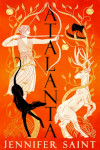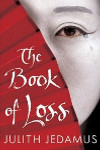Peter Ho Davies – The Fortunes
Posted 7th September 2020
Category: Reviews Genres: 2010s, Commentary, Historical, Social
Comments Off on Peter Ho Davies – The Fortunes

Some things don’t change, some things do; they all should.
Publisher: Sceptre (Hachette)
Pages: 222
Type: Fiction
Age: Adult
ISBN: 978-0-340-98025-5
First Published: 6th September 2016
Date Reviewed: 7th September 2020
Rating: 5/5
1800s – Ling is an early immigrant to American; America seems a better life with its promise of gold, but as it turns out, Chinese people are not welcome, and struggle in lowly positions. Ling manages to break the mould a little, and leave for a better job, but there are always questions and discomfort in the background. 1936 – Hollywood star, Anna May Wong, has struggled throughout her career to gain non-stereotypical roles; as an Asian American there are rules regarding race that she can’t get around, and now she has come to China to her ‘home’ land, finding that as much as she’s ‘other’ in America, she’s not Chinese here. 1980s – a friend of Vincent Chin, a Chinese American man killed in 1982 by white men because they thought he was Japanese – looks at what has happened and the fallout. Present day – John, a Eurasian, has travelled to China with his wife, the final stage in their adaptation process, and the trip and his prior writing has him questioning issues of race, situation, and the history of racism against Asian Americans.
The Fortunes, a book with an overarching theme – story, really – told in four stories, is a fantastic work that looks at the experiences of Chinese Americans and in turn Asian Americans over time, from the first immigrants during the gold rush era.
Ho Davies’ choice of four stories and the way he uses subtlety to connect them – because whilst you can see the themes, there’s still some subtlety to it – is compelling. Initially, whilst you’re reading the first story, it can be frustrating – here you are, completely ‘in’ Ling’s world, interested in seeing where it goes, meeting the various people, learning the history – and then it ends, and moves on to the next story, but once beyond that, or once you’ve accepted it, so to speak, the author’s choices come to the fore and you find yourself on a certain kind of journey. For those who don’t know much or anything about the historical, real, people, there is history to learn. Beyond that you’ve the methods – the language, the way of description – Ho Davies’ employs to tell his stories, to explain, and to teach.
For people who aren’t Asian, there’s a lot here about the experience of difference, of racism, historical and present-day, of stereotyping. Likely – or possibly (I’m not in a position to say for definite) for readers who are Asian, the value will be in the writing down and popularising, and the validation. The stories in The Fortunes are spaced out from the 1800s, they apply to separate eras in order to bring a full overview, and the constant moving forward of time shows how slow change has been in coming, and, although society has moved forward, that there is more that needs doing.
In story four, present-day fictional John looks back at other periods in time, pulling the stories together, suggesting that they are more novel than separate stories. If you’d already been wondering if there would be some joining up, this is where it happens. John’s thoughts, and his situation as a writer with the subjects he writes about, question the role of narrator and the place of the author in the book; with the stories sharing a theme and, whilst all different in character, sharing nevertheless a certain something that’s difficult to pinpoint exactly, there seems almost a novel-in-a-novel aspect to the book, Ho Davies’ pen being near enough to see. This of course links to the stories themselves, but also has a place in the text as a text, so to speak, the literary nature of it and the use of language being most apparent here.
You could perhaps say it’s a fractured narrative.
The Fortunes is, as said, fantastic. It looks at things in a certain way – perhaps not new, exactly, yet it kind of is – and offers a different way to read and learn about subjects (the use of the factual documentary footage Anna May Wong had made instead of the backdrop of one of her films, for example, is intriguing). Read it as both a novel and four novellas; to define it definitively either way would be wrong.
Speaking to Peter Ho Davies about The Welsh Girl, and The Fortunes (spoilers included)
Charlie and Peter Ho Davies discuss moving as a writer from Britain to the US, Welsh with English as a second language, the first Chinese Americans, Hollywood star Anna May Wong, and the impact – then and now – of the murder of Vincent Chin.
If you’re unable to use the media player above, this page has various other options for listening.
No Comments
Comments closed






















